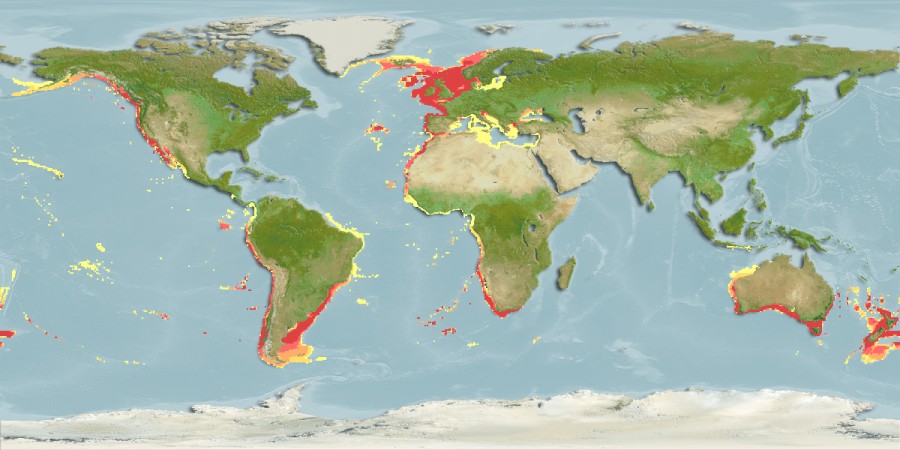The Tope Shark is a swift-moving, long-lived (up to 60 years) migratory species of hound shark that has a world wide distribution in sub-tropical waters where it is primarily coastal and bottom-associated (
IUCN 2011, Fishbase 2011). In the Eastern North Pacific, this species moves north during the summer and south during the winter (or into deeper waters): "one shark tagged off Ventura in southern California was captured 26 months later off Vancouver Island, British Columbia" (IUCN 2011). "In Canadian Pacific waters it is primarily found in continental shelf waters..from the surface to 471 m along Vancouver Island, Queen Charlotte Sound and Hecate Strait (
Fisheries and Oceans Canada 2012).
The Tope Shark is a dark bluish-grey in colour (Fisheries and Oceans Canada 2012). It is a slow-growing species that lives at least 45 years (Fisheries and Oceans Canada 2012). Maximum length recorded is 200 cm in the Mediterranean, though it is smaller in other parts of its range (IUCN 2011).
The Tope Shark has been widely harvested globally for liver-oil, meat and fins. It is considered globally vulnerable by the IUCN, with evidence of decline and low recovery in some regions, although it is stable in the Eastern North Pacific (IUCN 2011). The main threat to global populations is from fisheries (trawling, gillnets and longlines) and there is some threat to the species from the capture of pups on nursery grounds, and from habitat degradation from trawling (IUCN 2011).
Historically, in BC waters, the Tope Shark was harvested for liver oil: "this species "was the mainstay of the shark fishery "boom" between 1936 and 1944, when over 24 million pounds were landed. The fishery ended abruptly in 1946 with the development of synthetic vitamin A. ... Since the 1940s there has been no economic incentive to target it and these sharks are now mostly taken at low levels as a bycatch to other commercial species and by recreational anglers." (IUCN 2011).
Read the National Management Plan for this species.

